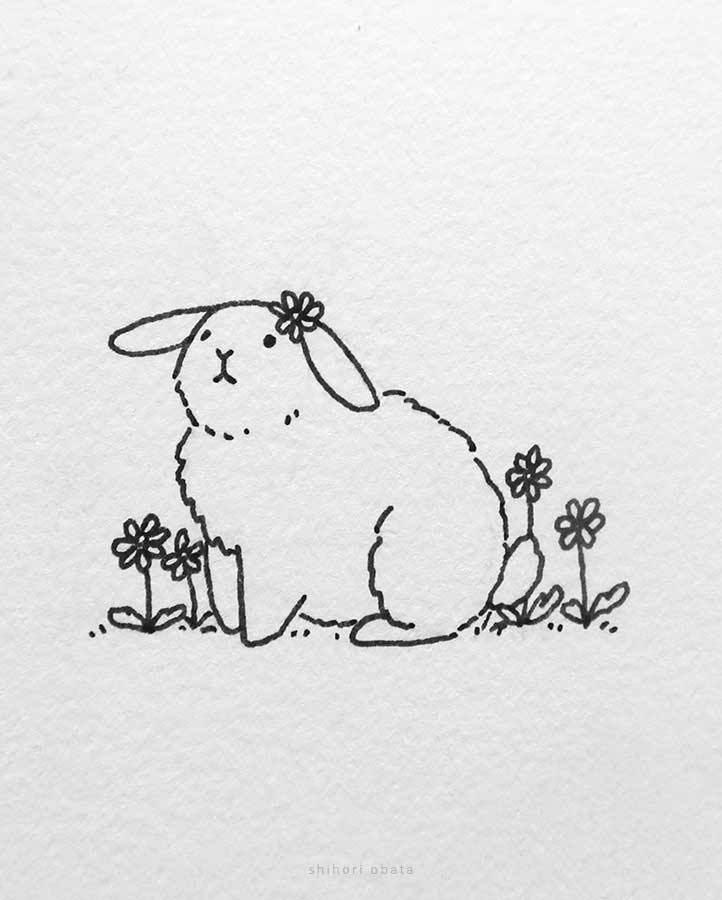Easy Rabbit Drawing Guide for Beginners: A Fun Family Activity
Hey there, creative families! Are you on the lookout for a fun and easy art project to enjoy with your little ones? Look no further! Drawing is a wonderful activity to foster creativity, improve coordination, and spend quality family time—and what’s cuter to draw than a fluffy little rabbit? Whether it’s for Easter, a school project, or just because, let’s hop right into this simple rabbit drawing guide that’s perfect for artists of all ages!
Why Drawing is Great for Kids
Drawing isn’t just a fun pastime—it’s also packed with benefits. It can enhance fine motor skills, encourage visual analysis, and boost confidence as children learn to create and express themselves. And the best part? You don’t need any fancy equipment; just a pencil, eraser, and some paper will do. Now, get your drawing supplies ready, and let’s get started!
What You Need:
- Pencil
- Eraser
- Drawing paper or sketchbook
- Colored pencils or markers (optional)
Step-by-Step Guide to Drawing a Simple Rabbit
Our easy rabbit drawing guide consists of a few straightforward steps that will help you create a charming bunny that looks straight out of a storybook. Don’t worry about perfection; the key is to have fun and practice your drawing skills!
Step 1: Sketching the Basic Shape
First, let’s sketch the basic outline of the bunny. Begin with a large oval shape for the body and a smaller circle for the head. It’s like creating a snowman but with only two sections. Make sure to position the head slightly overlapping the body to create a natural look.
Step 2: Adding Ears and Facial Features
Next, draw two long and slightly curved lines on top of the head for the ears – rabbits are known for their long ears, after all. At this stage, you can also map out the bunny’s face. A simple cross can help align the eyes, nose, and mouth before you draw them in. Place two dots for the eyes, a small triangle for the nose, and a curved line for the mouth. Don’t forget the whiskers!
Step 3: Drawing the Legs and Feet
Now, it’s time to add the legs. For a simple style, draw two ovals on each side of the body oval for the back legs. To represent the feet, make another smaller oval shape at the bottom of each leg oval. Front legs can be represented with two simple and shorter curved lines coming down from the middle of the body.
Step 4: Crafting the Tail and Fur Texture
No rabbit drawing would be complete without a fluffy tail! On the backside of the body oval, add a small and round fluffy shape for the tail. To give your bunny some texture, add short, quick strokes around the body, head, and ears to mimic fur. Remember, the fur gives your rabbit character, so have fun with it!
Step 5: Final Touches
After you have your bunny outlined, gently erase any extra lines from the initial shapes you drew. Now, bring your rabbit to life with some shading to add depth and dimension. If you’re using color, choose soft, natural colors like grays, browns, or whites for a realistic look or go vibrant for a whimsical vibe!
Drawing is a relaxing activity that can be quite rewarding, especially when you share it with your kids. So, embrace your inner artist, grab those pencils, and let your creativity run wild with this simple rabbit drawing guide. With practice and patience, you might just be surprised at the artwork you and your little ones can create together. Keep on drawing, and watch as your bunnies come to life on the paper, each with their unique personality!
Stay tuned for more tips on how to enhance your rabbit drawing and fun facts about these adorable creatures to inspire your artwork!

Easy Rabbit Drawing Guide for Beginners: A Fun Family Activity
Hello, wonderful parents and budding artists! If you’re eager to dive into a delightful drawing experience with your children, you’ve come to the right place! Today we’re going to learn how to draw an adorable rabbit step-by-step. Not only is this activity perfect for any occasion, but it’s also a fantastic way to bond with your kids and boost their artistic confidence. Ready to draw a cute bunny together? Let’s begin!
Why Drawing is Beneficial for Children
Drawing is more than just a delightful way to pass the time; it’s an educational adventure! For kids, it’s great for developing fine motor skills, improving concentration, and fostering an early appreciation for art. Plus, it’s an excellent opportunity for you to be there as they discover new talents. And don’t worry, this guide is designed with simplicity in mind, so all you’ll need is basic art supplies. So let’s gather our tools and leap into action!
5 Key Preparations for Rabbit Drawing
- Choosing the Right Supplies: Make sure you have a good pencil for sketching, a quality eraser for correcting any oopsies, and paper that’s easy for little hands to work on. You might also want colored pencils or markers to bring your creation to colorful life.
- Setting Up a Comfortable Workspace: Find a calm area with plenty of space. A kitchen table or a cleared section of the living room floor can become the perfect drawing studio for family fun.
- Embracing Imperfection: It’s essential to remind your kiddos that it’s okay if the drawing isn’t perfect on the first try. Every attempt is a learning experience and part of the creative journey.
- Keeping It Fun: Mix drawing time with storytelling. Maybe the rabbit you’re drawing is a superhero or a space explorer! This not only sparks creativity but also makes the process enjoyable.
- Motivation through Examples: Show your children examples of rabbit drawings and real rabbits to inspire them. Encourage them to observe details and infuse their unique style into their artwork.
Step-by-Step Guide to Drawing a Simple Rabbit
With these preparational steps secured, it’s time to begin our rabbit drawing adventure. Follow this guide, and you’ll have a charming and whimsical bunny in no time!
Step 1: Starting with Basic Shapes
Draw a large, soft oval for the body and a smaller, circular shape for the head. Keep the pencil lines light, as these are your guide shapes and will be modified later on.
Step 2: Crafting the Ears and Face
For the ears, add two tall arcs atop the head. To sketch the face, mark a gentle cross to indicate where the eyes, nose, and mouth will go. Small circles for the eyes, a tiny triangle for the nose, and a subtle line for the mouth create an adorable face. Let’s not forget the wispy whiskers for that extra touch of charm!
Step 3: Creating the Legs and Paws
Rabbits are known for their distinctive legs and paws. Draw two elongated ovals on each side of the body for the back legs, with smaller ovals at the ends for the feet. For the front paws, illustrate two shorter lines coming down from the body’s midpoint.
Step 4: Adding Fluffy Details
Every bunny needs a poofy tail! Attach a small puffball shape to the body’s rear. Then, give your rabbit character with quick, short strokes over the body, head, and ears to represent soft fur.
Step 5: Erasing Guidelines and Coloring
Gently erase your initial guide shapes, leaving only the rabbit’s form. Add light shadows for depth and pick out natural or fanciful colors to complete your rabbit masterpiece.
Gathering your family around to draw can become a treasured pastime, filled with laughter and memories. This rabbit drawing guide is your starting point, but the potential is limitless. Encourage your children’s imagination to bloom as you bring these hopping pals to paper. And remember, every line drawn is a stroke of love and shared creativity.
Keep an eye out for more artistic guides and interesting facts about rabbits to spark your family’s next drawing adventure!
See more great Things to Do with Kids in New Zealand here. For more information see here
Disclaimer
The articles available via our website provide general information only and we strongly urge readers to exercise caution and conduct their own thorough research and fact-checking. The information presented should not be taken as absolute truth, and, to the maximum extent permitted by law, we will not be held liable for any inaccuracies or errors in the content. It is essential for individuals to independently verify and validate the information before making any decisions or taking any actions based on the articles.




